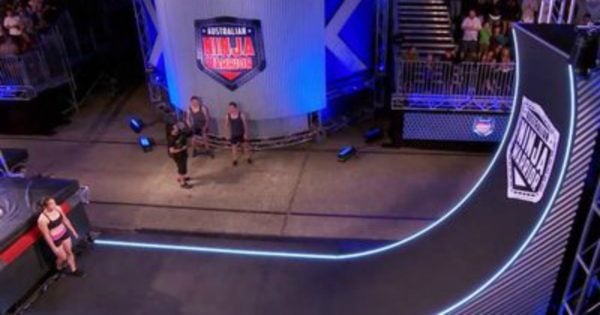On the first episode of Australian Ninja Warrior, host Rebecca Maddern described the game as, “the great equaliser”.
“Men and women compete on the same course,” she said. “It’s all about ability and agility.”
But, is it really?
The Guardian’s Erin Riley asked the question; “Is [Ninja Warrior] really a fair game?” and concluded, pretty convincingly, that it’s not.
On average, male athletes are taller and have greater upper body strength than female athletes. Their centre of gravity is higher. Grip strength, which Riley found was a “crucial attribute for man of the Ninja Warrior obstacles,” is significantly stronger in men.
LISTEN: Laura Brodnik and Clare Stephens chat with Ben Fordham, host of Australian Ninja Warrior on The Binge. Post continues below.
Almost the entire course is designed to favour height and upper body strength, meaning that unequivocally, the male competitor is at an advantage.
Female athletes are more flexible, yet at no point during the obstacle course is flexibility tested. There is only one obstacle, Riley says, the Bridge of Blades, that “rewards smallness and a lower centre of gravity that gives women an advantage.”
Of the 91 finalists, seven are female, and none of them completed the Warped Wall.
In the US, only one female competitor made it past the first round of finals, compared to 134 men.




Top Comments
Is there any sport that isn't rigged against women?
Comparing a physical competition event where men are biologically superior and giving reasons for how they are
Too the corporate world where there is no such superiority by just stating "The course stands as the perfect metaphor for what we see in the corporate world." Its literally the worst metaphor , you didnt even give a reason for HOW women are disadvantaged.